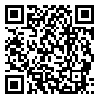1. Bighami M, Sarlak M, Koulivand P, Ahmadi AJTNJoSK. Evaluation of the Key Factors Affect Work-Life Balance of Nurses in Tehran. 2017;5(2):29-39. [
DOI:10.18869/acadpub.shefa.5.2.S1.29]
2. Kouhpayezade J, Aghilinejad M, Mokamelkhah EK, Golabadi MJRJoMS. Professional Burnout and related factors in employees of Ex-Iran University of Medical Sciences faculties in 2010. 2011;18(90).
3. Meyer A, Features Submission HCJOTiMH. The philosophy of occupational therapy. 1983;2(3):79-86. [
DOI:10.1300/J004v02n03_05]
4. Wagman P, Håkansson C, Björklund AJSJoOT. Occupational balance as used in occupational therapy: A concept analysis. 2012;19(4):322-7. [
DOI:10.3109/11038128.2011.596219] [
PMID]
5. Anaby DR, Backman CL, Jarus TJCJoOT. Measuring occupational balance: A theoretical exploration of two approaches. 2010;77(5):280-8. [
DOI:10.2182/cjot.2010.77.5.4] [
PMID]
6. Wilcock A, Chelin M, Hall M, Hamley N, Morrison B, Scrivener L, et al. The relationship between occupational balance and health: A pilot study. 1997;4(1):17-30. [
DOI:10.1002/oti.45]
7. Gurvis J, Patterson GJLiAAPotCfCL, Jossey‐Bass. Balancing act: Finding equilibrium between work and life. 2005;24(6):4-9. [
DOI:10.1002/lia.1091]
8. Greenhaus JH, Collins KM, Shaw JDJJovb. The relation between work-family balance and quality of life. 2003;63(3):510-31. [
DOI:10.1016/S0001-8791(02)00042-8]
9. Shamill A, Amini A, Yarahmadi R, Jafari HJJMR. A systematic review of work-related problems among occupational therapists and physical therapists. 2012;1:1-11.
10. Mozayan M, Rezaee M, Kalantari M, Tabatabaee SMJRM. A survey on burnout and related factors among occupational therapists in Iran. 2012;1(1):34-41.
11. Wagman P, Håkansson C, Jonsson HJJoOS. Occupational balance: A scoping review of current research and identified knowledge gaps. 2015;22(2):160-9. [
DOI:10.1080/14427591.2014.986512]
12. Matuska KM, Christiansen CHJJoOS. A proposed model of lifestyle balance. 2008;15(1):9-19. [
DOI:10.1080/14427591.2008.9686602]
13. Maslach C, Jackson SE, Leiter MP, Schaufeli WB, Schwab RL. Maslach burnout inventory: Consulting psychologists press Palo Alto, CA; 1986.
14. Filian EJTUoMS. Evaluation of burnout and its correlation with coping mechanisms in nurses of educational hospitals of Tehran [dissertation]. 1993;45.
15. Matuska KJOO, Participation, Health. Description and development of the Life Balance Inventory. 2012;32(1):220-8. [
DOI:10.3928/15394492-20110610-01]
16. Nazi S, Shafaroodi N, Lajevardi L, Mehraban AH, Yazdani F, Hosseinzadeh SJIJoCM. Life balance of mothers of children with cerebral palsy. 2017;8(11):583. [
DOI:10.4236/ijcm.2017.811055]
17. Ghamari N, Shafaroodi N, Derakhshanrad SA, Ghamari M, Ghamari EJRM. Motivational needs and its relationship with motivation potential in occupational therapy profession. 2015;3(4).
18. Safiri Kh MF. A Meta-analysis of studies on factors affecting leisure time. 2011;18(38):145-66.
19. Maghsoudi S, Soleimani Z, Abdolhosseini Z. Study of how to spend leisure time and its changes in Iran. 2013.
20. Ghamari N, Derakhshanrad S, Ghamari M, Ghamari EJMR. Examining the motivational power of occupational therapy profession among occupational therapist in Fars providence in 1390. 2012;6(3).
21. Porhadi S, Kamali M, Khalesi N, Akbarfahimi MJJoHM. Motivational potential of jobs in the Rehabilitation Center of Tehran Welfare. 2009;12(37):57-64.
22. Edwards H, Dirette DJOtihc. The relationship between professional identity and burnout among occupational therapists. 2010;24(2):119-29. [
DOI:10.3109/07380570903329610] [
PMID]
23. Peterson U, Demerouti E, Bergström G, Samuelsson M, Åsberg M, Nygren ÅJJoan. Burnout and physical and mental health among Swedish healthcare workers. 2008;62(1):84-95. [
DOI:10.1111/j.1365-2648.2007.04580.x] [
PMID]
24. Gaither CA, Kahaleh AA, Doucette WR, Mott DA, Pederson CA, Schommer JCJRiS, et al. A modified model of pharmacists' job stress: The role of organizational, extra-role, and individual factors on work-related outcomes. 2008;4(3):231-43. [
DOI:10.1016/j.sapharm.2008.04.001] [
PMID]








